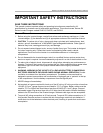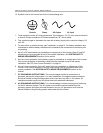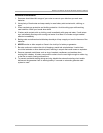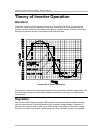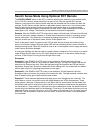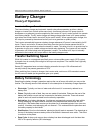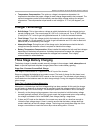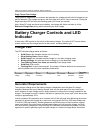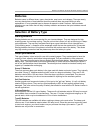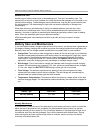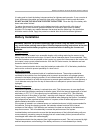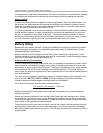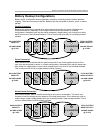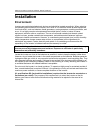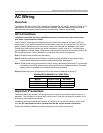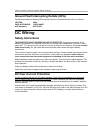
Xantrex RV Series Inverter/Charger Owner’s Manual
9
Batteries
Batteries come in different sizes, types, chemistries, amp hours, and voltages. There are nearly
as many descriptions of how batteries should be used as there are people willing to offer
explanations. It is not possible here to discuss all aspects in detail. However, there are basic
guidelines you can follow that will help in battery selection and ensure that your batteries are well
maintained.
Selection of Battery Type
Starting Batteries
Starting batteries are not recommended for your inverter/charger. They are designed for high
cranking power, but not deep cycling. They do not hurt the inverter, but will not last long in a deep-
cycle application. The way they are rated should give a good indication of their intended use—
"cold cranking amps," a measure of the amperage output that can be sustained for 30 seconds.
Starting batteries use lots of thin plates to maximize the surface area of the battery. This allows
very high starting current but lets the plates warp when the battery is cycled.
Deep-Cycle Batteries
This type of battery is best suited for use with inverter/chargers. They are designed to have the
majority of their capacity used before being recharged. They are available in many sizes and
types. The most common type is the non-sealed, liquid electrolyte battery. Non-sealed types have
battery caps. The caps should be removed periodically to check the level of electrolyte. When a
cell is low, distilled water should be added. The electrolyte level should be checked monthly and
topped up if needed after recharging.
Group 27 Batteries
The most common deep-cycle battery is the type used with boats and motor homes. They typically
are called “Group 27” batteries and are similar in size to a large truck battery. They are 12-volt
batteries rated at 80 to 100 amp hours. Often the deep cycle claim is overstated. They do work
better than a car battery, but are not recommended for anything but the smallest systems.
Golf Cart Batteries
Another popular and inexpensive battery of this type is the "golf cart" battery. It is a 6-volt battery
rated at 220 amp hours. They can be cycled repeatedly to 80% of their capacity without being
damaged. This is the minimum quality of battery that should be used with the RV Series inverter in
normal applications.
L16-type Batteries
Some systems use the L16 type of battery. These are 6-volt batteries rated at 350 amp hours and
are available from a number of manufacturers. They are 17 inches in height and weigh up to 130
pounds each, which may be troublesome in RV or marine installations.
Type 8D Batteries
Type 8D batteries are available with either cranking or deep-cycle construction. The deep-cycle
versions are 12-volt batteries rated at about 200 amp hours. Since they are most commonly used
to start truck engines, you should make sure you purchase the deep-cycle version. Type 4D
batteries are very similar in construction.



